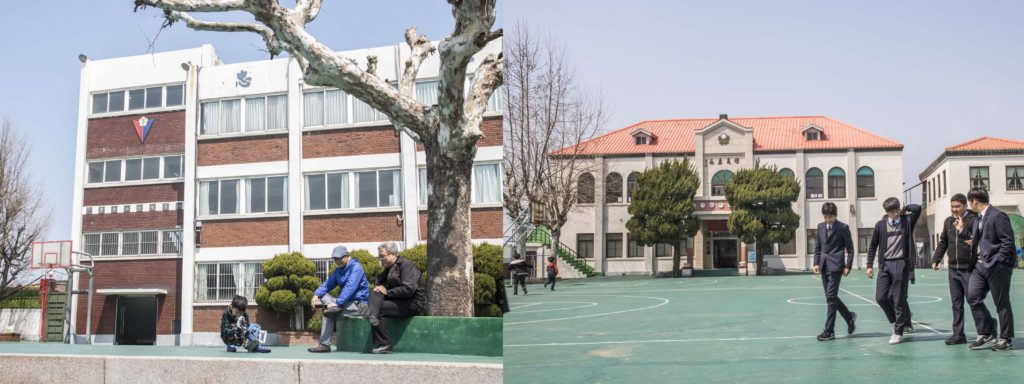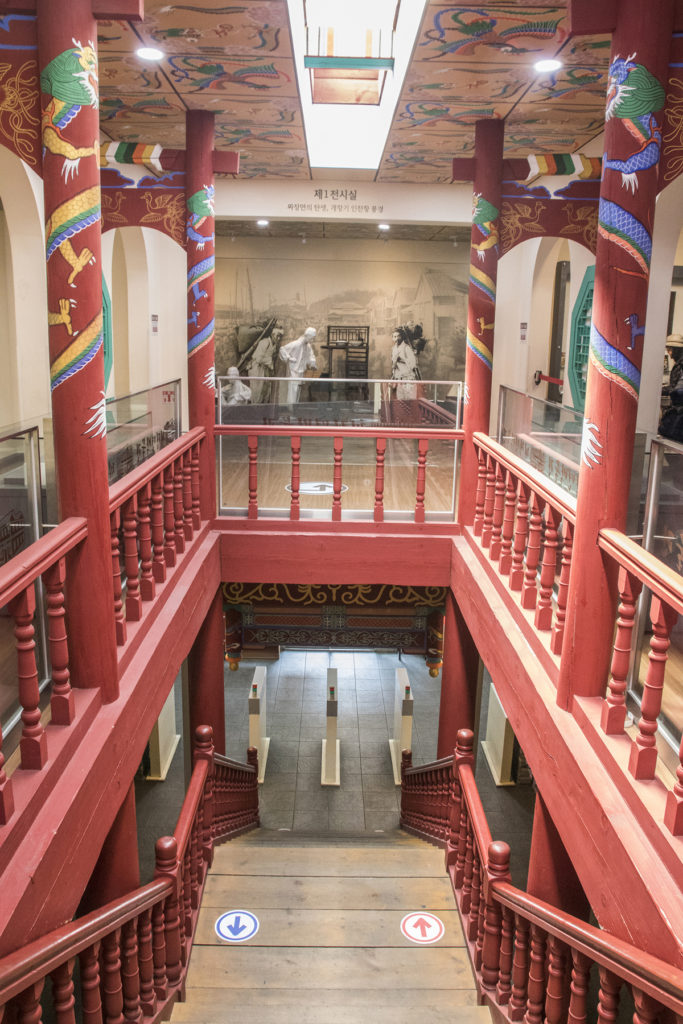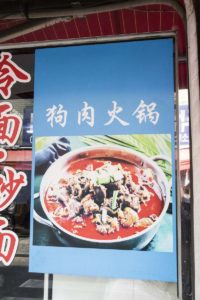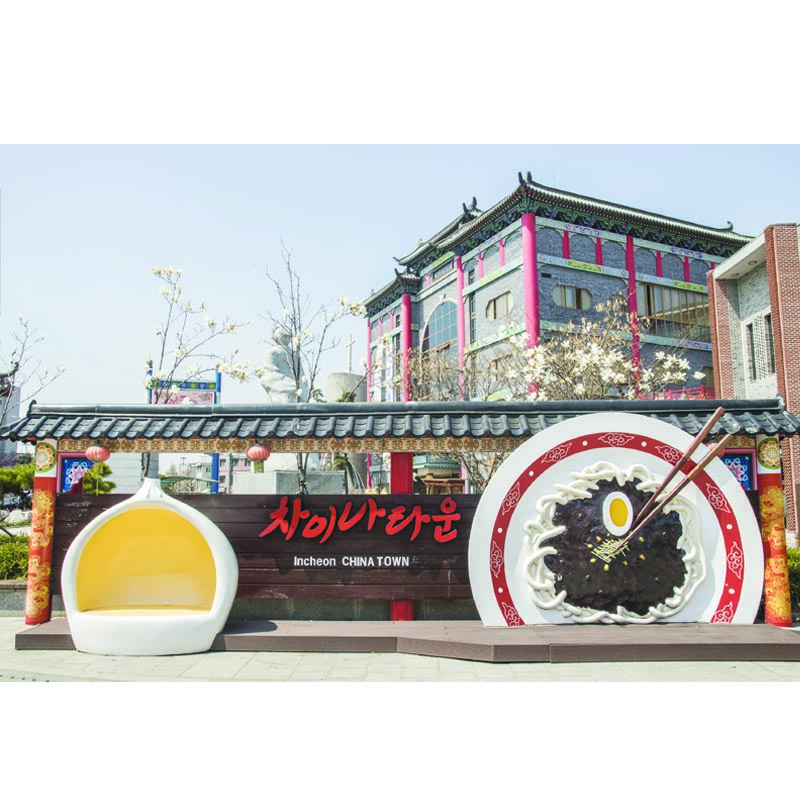
Until recently, there was no official Chinatown in South Korea, although there were Chinatowns in there up until the 1950s.
In 1942, Chinese in the Korean peninsula numbered 82,661. But many left or perished during World War II. Many more migrated elsewhere during the 1960s and 1970s, due to restrictive government policies.
Things began to change in the 1990s when South Korea increased its economic ties with China. By 2006, the population in the Chinese Korean community was around 26,700.
Then, in 2002, the Incheon city government decided to “re-establish” its Chinatown. So far, it is still the only official Chinatown in South Korea.
From a historical standpoint, Incheon’s current Chinatown can be considered a sequel to a previously established Chinese settlement. In the late 19th century, China and other nations demanded the right to establish a settlement in Korea, which would allow foreigners to run businesses without being subjected to Korean laws. China got its settlement in the port city of Incheon in 1884, and Chinese migrants from China’s Shandong province began populating Incheon.
After the war, the Chinese residents moved away. Many of the city’s older generation are not even aware that Incheon used to have a Chinatown.
The subway commute from Seoul to Incheon takes an hour. I didn’t have to go far to look for Chinatown: it is just outside the station. The entrance to Chinatown is marked by a huge Chinese arch, which was donated to the city by the government of Shandong province. They also funded a Chinese cultural center and a statue of Confucius which overlooks the harbor from one of the city’s high points.
Standing under Incheon’s Chinatown arch, two things immediately became apparent.
First, this is the first Chinatown I ever visited that is built on hilly terrain. Exploring the first street alone required walking up a slope.
Second, nearly all the streets bear the same name: Chinatown – ro. I speculated this is probably why the gate to Chinatown bears “China Street” on its inscription rather than China Town. So, I relied on my smartphone and a sense of direction to get around. Despite the challenges, I was determined to enjoy Incheon’s Chinatown, having already done my research and picked the places to visit.

Uisendong Temple
First stop is the Uisendong Temple. I had to go up the main street, looking for a wall with the image of the Chinese Eight Immortals. Along this wall is a small entrance leading to the temple.
The name of the temple means “to live righteously,” built in 1883 by Buddhist monk Hwang Hab Gyeong. He may have been a martial arts trainer as well, as some online blogs claimed that the temple was the headquarters of a martial arts society. As time went by, the temple fell into a very bad condition. There were even calls for its demolition in the 1970s.
But the Shandong provincial government came to its rescue, and it was restored in 2005. It has since been designated as Cultural Heritage No. 1 by the Overseas Chinese Association in Incheon Metropolitan City.
Jajangmyeon
Next goal: find a museum dedicated to jajangmyeon. This is the Korean’s take on the Chinese noodle dish zhajiangmian 炸醬麵. Instead of fermented bean paste and pork, the Koreans use roasted soybean paste which gives the dish its distinctive black color, with seafood and onions added for extra texture and flavor. Unlike zhajiangmian, the sauce for the jajangmyeon is served separately from the noodles.
It became popular across South Korea in the 1950s as it was easy and cheap to prepare. It became the celebratory dish for occasions such as birthdays and graduations. In fact, April 14 is a special day dedicated to this dish. Known as ‘Black Day,’ this is the day when South Koreans unlucky in love will dress up in all black outfits and stain their teeth black eating jajangmyeon.
The museum is across a two-story grey brick building which used to house the restaurant Gongwachun. It was the first restaurant to serve jajangmyeon in Incheon in 1905, and was established by Woo Hee Gwang, a migrant from Shandong. He must have been a fervent supporter of the republican cause in China, as the Chinese language signage of this restaurant translates to “Spring came to the republic.”
Viewing the exhibit, it struck me that the story of Woo Hee Gwang mirrored that of Chinese-Filipino restaurateur Ma Mon Luk. Their stories were similar: an itinerant peddler who later owned his own restaurant.
Thankfully, Woo’s legacy still survives – the restaurant has a new location in Incheon’s Chinatown. Unfortunately, his descendants no longer own the restaurant – the rights to the name and the restaurant was sold off to a corporation in the 1980s.

Joongsan Overseas Chinese School
Exiting the museum, I fortuitously spotted a flagpole with the flag of Taiwan. It was the next site I wanted to visit, the Joongsan Overseas Chinese School. All the Chinese language schools in South Korea are funded by the Taiwanese government, hence the Taiwanese flag. Upon graduation, students can attend universities in Taiwan or apply as foreign students in South Korean universities.
As I took photos, I noticed a memorial outside the school proclaiming it was established in 1902. This contradicted claims on the internet that it opened in 1934.
But the name of the school offers a clue: it is the Korean version of Sun Zhong Shan (Sun Yat-sen), the founder of modern China. I speculated that it was most likely opened in 1902, during the height of Sun Zhong Shan’s popularity.
As I was taking photos of the school, I noticed two elderly gentlemen sitting nearby and conversing under the tree. One of them came up to me and introduced himself as Sun Cheng Zong, the school principal.
In a mix of English and Mandarin, we talked about photography and how his grandfather first came to Incheon from Shandong province. But our conversation was cut short when a bell rang and Sun had to leave. We exchanged calling cards, hoping to keep in touch.

Cultural exchanges
A few meters from the school was a stone staircase that leads to the statue of Confucius at the top of the hill. The stone staircase represented the border that separated the Chinese and Japanese settlements.
At the bottom of the staircase is another donation from China: the Center of Korean Chinese Cultural Exchange. According to its in-house brochure, it has two main purposes: to help facilitate cultural exchanges between China and South Korea; and secondly, help boost Incheon’s art scene.
As I went around the facilities, it seemed the center has more success in its second purpose. There was supposed to be an overseas Chinese history museum, but it appears closed.
An exhibit on the second floor regarding Chinese culture and its resurgence in the world stage seems to be gathering dust. I wouldn’t be surprised if this exhibit was scrapped altogether and converted into another gallery space eventually.
I headed back to the center of Chinatown to go to the new location of Gongwachun and rewarded myself with a jajangmyeon lunch. As I was slurping and chewing the blackened noodles, I realized how unique Incheon’s Chinatown is among overseas Chinese communities. It is the only Chinatown I am aware of that had both the Chinese and Taiwanese government lending a hand in shaping its identity and keeping its heritage alive. But maybe except for the Jajangmyeon Museum, I didn’t see much evidence of a unique Chinese Korean identity.
In this day and age, Chinatowns should not just be outposts of Chinese culture. They should also be a reflection of how the Chinese have managed to adopt and blend the two cultures that they are now living in.
As South Korea’s migrant Chinese community is growing again, South Korea should consider adopting a more open approach in accepting the new migrants to its society. This would help create a more genuine cultural interaction between the Chinese and South Koreans, leading to a more authentic and unique Chinatown.

Seoul’s Chinatown: Daerim-Dong
In the 1997 edition of the Lonely Planet Korea Guidebook, the writers claimed that Seoul had no Chinatown. For them, the nearest to a Chinatown in Seoul was a row of restaurants and bookshop in front of the Chinese embassy in the district of Myeongdong.
While the writers may have missed the Chinese primary school next to the embassy as being part of this community, the truth is that even to this day, Seoul still does not have a Chinatown.
Why does Seoul need a Chinatown? For one, it serves as a recognition of the existence of a growing Chinese migrant community in South Korea. In the late 1990s, the South Korean government signed various treaties with China. One such treaty allowed Chinese migrant workers to enter and work in South Korea.
According to the Chosun Ilbo, one of South Korea’s major newspaper, an estimated 58,984 Chinese residents lived in South Korea in 2000. But data from the Korea Statistical Information Service in 2017 has shown that the number had grown to 1,018,083.
While most of the migrant workers came from China’s northeast, this wave of migrant workers is interesting – it now includes ethnic Koreans born in China. This group identifies themselves as the Joseonjok or Joseon tribe, the word “Joseon” being the name of one of the dynasties that ruled Korea. This group forms the bulk of the migrant workers coming to work in South Korea. In 2017, they numbered 679,729, or more than half of all the Chinese migrant workers in South Korea.
Because of the growing Chinese migrant community, the Chosun Ilbo website reported that there are now eleven neighborhoods across South Korea that have prominent Chinese communities. The biggest one is located on the southwestern side of Seoul in Daerim-dong.
Chinese migrant workers were drawn to the Daerim-dong area, a district that was once dominated by the Guro Industrial Complex. During the 1990s, when the factories at the complex were still operating, many Chinese migrants went there to work. They ended up living in this area as the rent was affordable. The factories in the complex have long since ceased to operate, but many have stayed on in this neighborhood as it was too expensive to move elsewhere in Seoul.
Visiting Daerim-dong, I found it to be very much a working-class neighborhood. There were no Chinese arches or Chinese themed lampposts, but there were a lot of Chinese signage. Of course, there were also a lot of Chinese eateries. Most of them specialized in cuisine from Northern China, such as yang rou chuan (羊肉串 barbecue lamb skewers), guo qiao mi xian (過橋米線 crossing bridge noodles) and spicy mala hot pot (麻辣火鍋). If you can read Chinese, you will also find a few places here that offer dog meat hot pot.

Considering the size of the Chinese community here and the reputation of the area, why did the local government not declare this as Seoul’s Chinatown? In 2015, Seoul’s city government did unveil plans to redevelop Daerim-dong as Seoul’s Chinatown. It came complete with a cultural center and a language center. But the Korean residents in the area opposed the plan. They argued that the influx of visitors to the area may lead to congestion and disrupt the quiet neighborhood. This may then lead to a drop in property prices.
It is not the first time this happened. The Seoul city government tried in the early 2000s to designate two other neighborhoods as Chinatown. Both attempts failed due to resistance from the Korean residents.
If we were to dig deeper, the real reason appears to be that the Joseonjok in particular are perceived by South Koreans as hot-tempered and violent. They are also viewed as prone to criminal or having anti-social behavior, especially when they are under the influence of alcohol. Two murders in 2012 and 2013 committed by Joseonjok further strengthened this image. Even South Korean government data showing that foreigners are less likely to commit crimes than Koreans failed to disprove this notion.
But why are the new migrants not challenging this false image? The reason is that most of the new migrants are only given temporary work visas and not residency visas. So most of the Chinese migrants regard their stay in South Korea as short term. To them, it is not worth the bother of changing the perception of the South Koreans.
But this negative image might change because of two disturbing trends in South Korea’s society: the aging population and the lower birth rate. Perhaps, when the South Korean government decides to grant Chinese migrants residency visa, then maybe Seoul will have its first true Chinatown.
